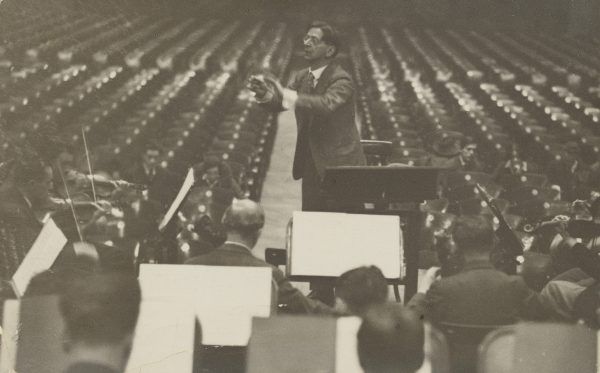Alexander Zemlinsky,
The Stranger

Alexander Zemlinsky,
The Stranger
Itinerary of a Musician at the Crossroads of Many Worlds
The composer and conductor Alexander Zemlinsky, who was born in Vienna in 1871 and died near New York City in 1942, passed through several worlds, which he also saw disappear. The first was that of his infancy and youth, the Austro-Hungarian Empire, “that world of security”, as the author Stefan Zweig (1881-1942) described it in The World of Yesterday, before realizing that it was actually “naught but a castle of dreams”.
Like Zweig, however, Zemlinsky seems only to have fully lived in a different world, the world of art, to which he dedicated his entire existence. This world became his homeland, an ideal place without borders or passports, whose universal language, music, was a balm for the “wounded identity” of which Michael Pollak (1948-1992) spoke when describing the Viennese artists who placed the idea of art above that of the nation.
Alexander Zemlinsky’s musical works are also located at the crossroads of many worlds: Vienna, Prague and Berlin – and then New York. One can detect in his oeuvre certain themes of Johannes Brahms (1833-1897), the imprint of Gustav Mahler (1860-1911), and the retrospective influence of Arnold Schönberg (1874-1951), whose only teacher he was.
But these reminiscences, which have been accused of eclecticism, cannot mask his originality and pioneer status, along with the diaphanous quality of his music and the violence, which – abruptly – emerges from it. Through this violence Zemlinsky never ceased to probe his own strangeness.
Of Zemlinsky one might quote what Hannah Arendt (1906-1975) wrote about the philosopher Walter Benjamin (1892-1940): “This man didn’t learn to swim either with or against the tide”. In her posthumous homage to Benjamin, Arendt compared him to “the little hunchback” (Das Bucklicht Männlein), a character in a popular German song. Benjamin mentioned this pilfering, maladroit character, with whom he identified, at the end of Berlin Childhood around 1900, published in 1932-1933. He also recognized the hunchback character in Franz Kafka (1883-1924) in an article he published on 21 and 28 December 1934 in commemoration of the tenth anniversary of the author’s death. Just a few days before, on 15 December 1934, Alexander Zemlinsky completed a lied entitled Das Bucklicht Männlein.
Trained in Vienna at a time when the city was “less an art town than a town of scenery par excellence”, as Hermann Broch (1886-1951) put it, Zemlinsky did not leave the Austrian capital until he moved to Prague at the age of forty. There he turned the Neue Deutsches Theater into a leading venue and was its music director for ten years, following Czechoslovakian independence.
He only returned to his native city after a further period of five years at the Berlin Kroll Opera, where he collaborated with the avant-garde artists of the time, adapting for his own works not the texts of post-World War I poets, but those of the Harlem Revival. In 1933 the Nazis forced him to return to Vienna and then, in 1938, to become an exile. Once again he witnessed a perishing world, and was probably nowhere more a stranger than in New York, where he took refuge and died in 1942, bereft of support and already almost forgotten.
The year before leaving Europe Zemlinsky composed a collection of twelve songs that brought together the voices of Goethe (1749-1967), Stefan George (1868-1933), and Langston Hugues (1902-1967). The seventh song, which contains traces of jazz, is called Elend, “misery” in German. But the word’s Latin roots also refer to a person who has been banished, who has no land (ali landi) and is condemned to wander from one world and one kind of music to another, in search of lost harmony.
